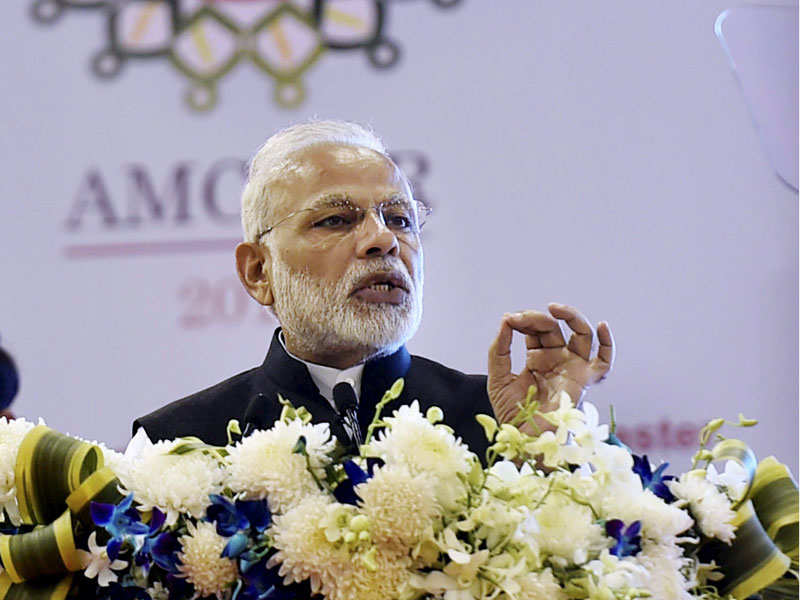Disaster Risks In India
India is vulnerable, in varying degrees, to a large number of natural as
well as man-made disasters. 58.6 per cent of the landmass is prone to
earthquakes of moderate to very high intensity; over 40 million hectares (12
per cent of land) is prone to floods and river erosion; of the 7,516 km long
coastline, close to 5,700 km is prone to cyclones and tsunamis; 68 per cent
of the cultivable area is vulnerable to drought and hilly areas are at risk from
landslides and avalanches. Vulnerability to disasters/ emergencies of
Chemical, Biological, Radiological and Nuclear (CBRN) origin also exists.
Heightened vulnerabilities to disaster risks can be related to expanding
Population, urbanization and industrialization, development within high-risk
zones, environmental degradation and climate change.
Earthquake Zones In India
National Policy On Disaster Management(NPDM)
The National Policy on Disaster Management (NPDM) has been prepared in tune with and in pursuance of the Disaster Management Act, 2005. National Policy on Disaster Management (NPDM) will provide the framework/roadmap for handling disasters in a holistic manner.
The Policy covers all aspects of disaster management covering institutional, legal and financial arrangements; disaster prevention, mitigation and preparation, techno-legal regime; response, relief and rehabilitation; reconstruction and recovery; capacity development; knowledge management and research and development.
It focuses on the areas where action is needed and the institutional mechanism through which such action can be channelized.
The NPDM addresses the concerns of all the sections of the society including differently able persons, women, children and other disadvantaged groups. In terms of grant of relief and formulating measures for rehabilitation of the affected persons due to disasters, the issue of equity/inclusiveness has been accorded due consideration.
Vision
To build a safe and disaster resilient India by developing a holistic, proactive, multi-disaster oriented and technology driven strategy through a culture of prevention, mitigation, preparedness and response.
Approach
1) A holistic and integrated approach will be evolving toward disaster management with emphasis on building strategic partnerships at various levels. The themes underpinning the policy are:
2) Community based DM, including last mile integration of the policy, plans and execution.
3) Capacity development in all spheres.
4) Consolidation of past initiatives and best practices.
5) Cooperation with agencies at national and international levels.
6) Multi-sectoral synergy.
Objectives
The objectives of the national policy on disaster management are:
a) Promoting a culture of prevention, preparedness and resilience at all levels through knowledge, innovation and education.
b) Encouraging mitigation measures based on technology, traditional wisdom and environmental sustainability.
c) Mainstreaming disaster management into the development planning process.
d) Establishing institutional and techno-legal framework works to create an enabling regulatory environment and a compliance regime.
e) Ensuring efficient mechanism for identification, assessment and monitoring of disaster risks.
f) Developing contemporary forecasting and early warning systems backed by responsive and failsafe communication with information technology support.
g) Promoting a productive partnership with the media to create awareness and contribute towards capacity development.
h) Ensuring efficient response and relief with a caring approach towards the needs of the vulnerable sections of the society.
i) Undertaking reconstruction as an opportunity to build disaster resilient structures and habitat for ensuring safer living.
j) Promoting productive and proactive partnership with media in disaster management.
Prime Minister's ten point agenda on DRR
1 All development sectors must imbibe the principles of disaster risk management
2 Risk coverage must include all, starting from poor households to SMEs to multi-national corporations to nation states
3 Women’s leadership and greater involvement should be central to disaster risk management
4 Invest in risk mapping globally to improve global understanding of Nature and disaster risks
5 Leverage technology to enhance the efficiency of disaster risk management efforts
6 Develop a network of universities to work on disaster-related issues
7 Utilize the opportunities provided by social media and mobile technologies for disaster risk reduction
8 Build on local capacity and initiative to enhance disaster risk reduction
9 Make use of every opportunity to learn from disasters and, to achieve that, there must be studies on the lessons after every disaster
10 Bring about greater cohesion in international response to disasters


Comments
Post a Comment